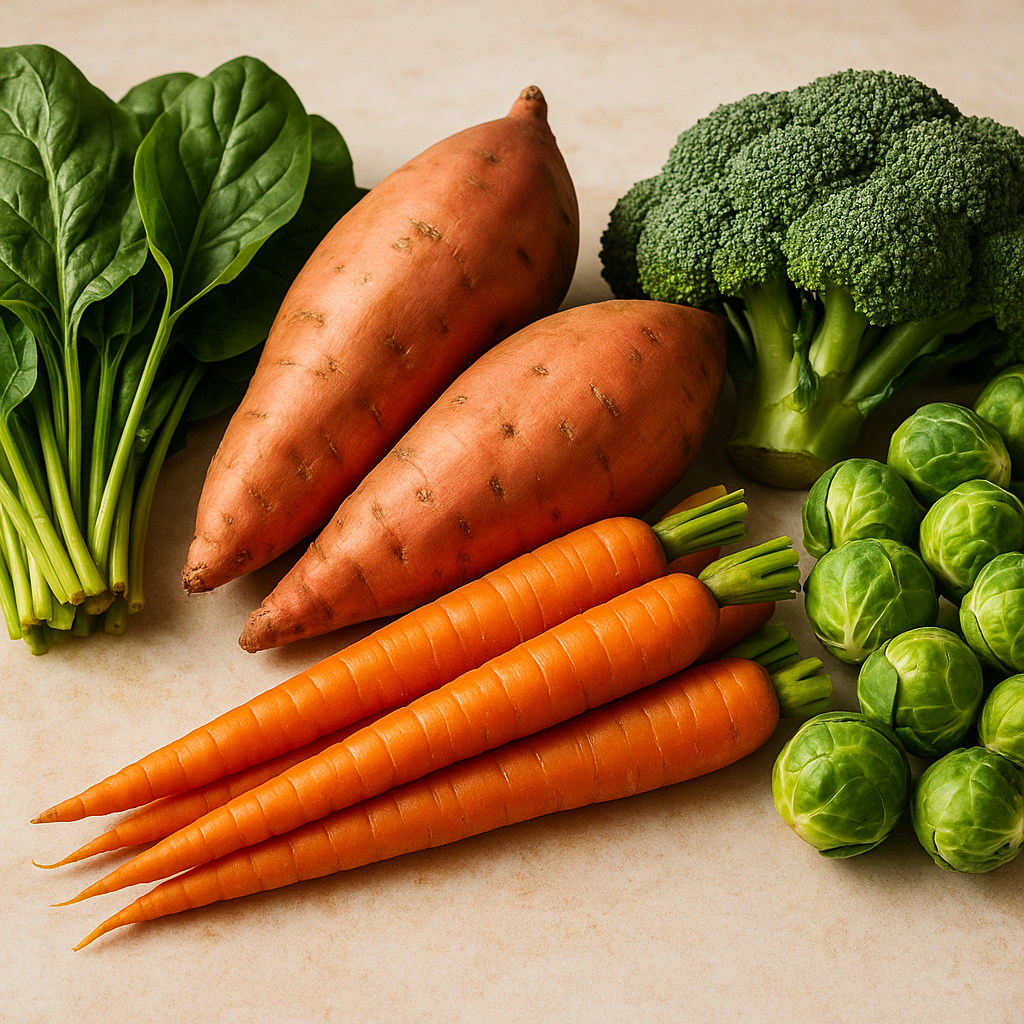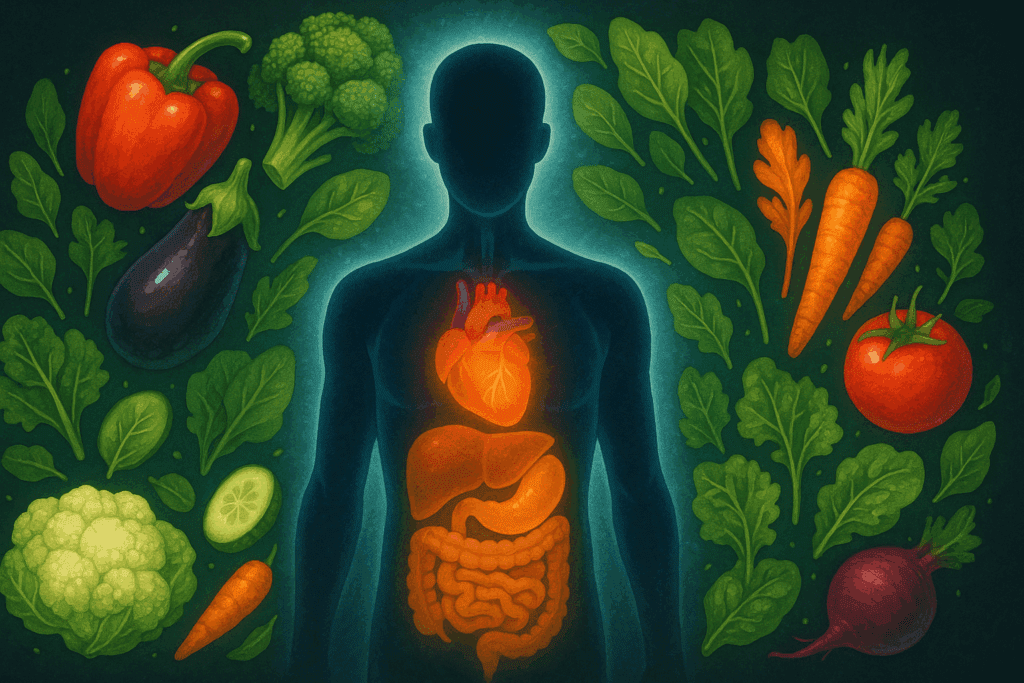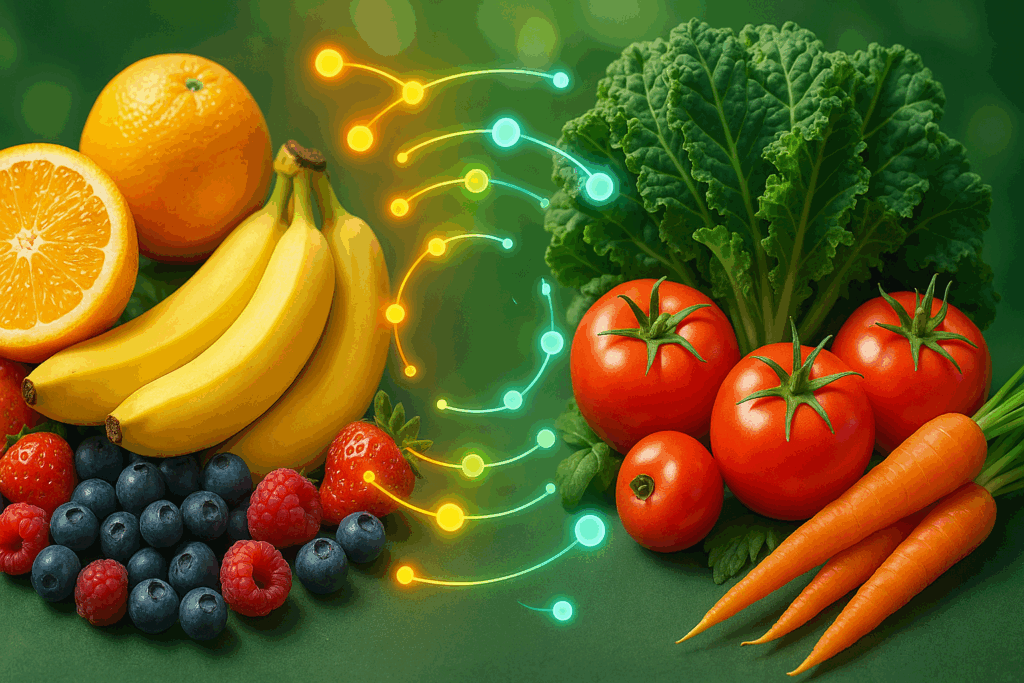Vegetables are a cornerstone of human nutrition, celebrated for their robust nutrient profiles and their role in disease prevention, longevity, and metabolic health. While modern diets often struggle to meet the recommended daily intake of vegetables, the benefits of incorporating a diverse array of plant-based foods cannot be overstated. The symphony of vitamins, minerals, fiber, and phytonutrients in vegetables works harmoniously to support every major system in the human body. This article explores three essential health facts about vegetables, the key nutrients they provide, and why they are indispensable to a well-balanced diet. We will also explore what nutrients vegetables give you, the best vegetables to eat, and how vegetables and fruits together form a diet that nourishes from the inside out.
You may also like: 4 Ways to Have a Healthy Diet: Expert Tips Backed by Science for Better Nutrition and Long-Term Wellness
Vegetables Are Powerhouses of Essential Nutrients
Among the most compelling health facts for vegetables is their unparalleled nutrient density. Nutrient density refers to the concentration of vital nutrients per calorie, and vegetables top the list of healthy food vegetables that deliver more benefits for fewer calories. From leafy greens like spinach and kale to cruciferous options such as broccoli and Brussels sprouts, vegetables are packed with major nutrients for vegetables including vitamins A, C, K, folate, potassium, and magnesium. These nutrients play vital roles in everything from cellular repair to immune function and skeletal integrity.
Understanding what nutrients for vegetables are present in each variety helps tailor dietary choices to individual health goals. For example, spinach is rich in iron and folate, supporting red blood cell formation, while sweet potatoes provide beta-carotene, a precursor to vitamin A that supports vision and skin health. Carrots, another excellent example of vegetables, are not only rich in vitamin A but also contribute fiber and antioxidants that may help combat inflammation and support cardiovascular wellness. Indeed, what nutrient comes from vegetables varies widely, making it essential to consume different veggies regularly.
Including vegetables in your diet consistently ensures you benefit from the broad spectrum of these nutrients. When people ask, “What nutrient do vegetables provide most abundantly?” the answer depends on the type of veggies consumed. Leafy greens generally provide vitamin K and magnesium, root vegetables often offer potassium and fiber, while cruciferous vegetables deliver potent antioxidants and compounds that support liver detoxification. This diversity underpins why vegetables are important to eat and why consuming different vegetables ensures comprehensive nutritional coverage.

Vegetables Help Prevent Chronic Diseases
Another indispensable health fact about vegetables is their role in preventing chronic diseases, including heart disease, cancer, diabetes, and obesity. The connection between vegetable and fruits that are good for you and disease prevention is well-established in nutritional science. Vegetables are naturally low in fat and calories while being rich in fiber, antioxidants, and phytochemicals that support metabolic function and reduce inflammation.
Numerous epidemiological studies have demonstrated that individuals who follow a fruit and vegetable diet have a significantly lower risk of chronic illness. This is not coincidental. Phytonutrients such as flavonoids, carotenoids, and glucosinolates found in many kinds of vegetables help neutralize free radicals, reduce oxidative stress, and modulate gene expression in ways that suppress disease development. For instance, cruciferous vegetables like broccoli, cauliflower, and cabbage contain sulforaphane, a compound linked to detoxification and anti-cancer properties.
The fiber in vegetables also plays a pivotal role in managing blood sugar levels and supporting a healthy gut microbiome. By improving insulin sensitivity and promoting the growth of beneficial bacteria, fiber helps to mitigate the risk of type 2 diabetes and gastrointestinal disorders. This reinforces the importance of including vegetables in your diet not just for nutrient density but for holistic disease prevention. Moreover, understanding what nutrients does vegetables give you can help in constructing meals that align with specific health goals, such as improving cardiovascular health or supporting hormonal balance.
Vegetables Support Longevity and Cognitive Function
The third critical health fact about vegetables lies in their profound impact on longevity and brain health. Research consistently shows that diets rich in vegetables contribute to a longer lifespan and reduced cognitive decline in aging populations. This benefit stems largely from the anti-inflammatory and neuroprotective compounds found in different veggies. For example, lutein, a carotenoid found in dark leafy greens, accumulates in the brain and is associated with improved cognitive performance and memory retention.
The Mediterranean diet, which emphasizes high consumption of fruit and vegetable diet components, has been linked with lower incidence of Alzheimer’s disease and overall cognitive deterioration. This is because such diets provide abundant vitamins (especially vitamin E and folate), minerals, and antioxidants that protect neural pathways and reduce age-related cellular damage. The inclusion of healthy food vegetables like beets, which support blood flow to the brain, and avocados, which offer healthy fats and vitamin K, further enhances mental clarity and memory in older adults.
A key reason why is vegetables important to eat regularly is their impact on aging at the cellular level. Vegetables contain polyphenols and other bioactive compounds that activate longevity pathways, reduce DNA damage, and support mitochondrial health. These mechanisms collectively contribute to enhanced energy, mood stability, and resilience against age-associated disorders. By incorporating what are three nutrient values does vegetables have into everyday meals, individuals can proactively support cognitive wellness and improve their quality of life over time.

Exploring What Nutrients for Fruits and Vegetables Matter Most
While vegetables often steal the spotlight for their dense micronutrient content, fruits are equally vital in a balanced diet. The question “What nutrients for fruits matter most?” opens a conversation about how vitamins like vitamin C, potassium, and dietary fiber are common to many fruits and support immune function, cardiovascular health, and digestive balance. Pairing vegetables and fruits that are good for you amplifies nutritional benefits through synergy. For instance, vitamin C from citrus fruits can enhance iron absorption from leafy greens, while fats from avocados can help absorb fat-soluble vitamins like A and K from vegetables.
This natural pairing is central to a fruit and veggie diet that optimizes health outcomes across the lifespan. Those wondering “what are 3 health fact for fruits and vegetables combined?” might consider these: first, they provide complementary nutrients that are more bioavailable when consumed together; second, their fiber content collectively supports satiety and weight regulation; and third, their phytochemicals and antioxidants offer layered protection against oxidative damage and systemic inflammation. Together, they exemplify why fruit provide for the body more than just sweetness and why is fruit needed food for life.
When we look at what are three nutrient values do fruits have, common answers include vitamin C, potassium, and dietary fiber, all of which are foundational to maintaining vascular integrity, immune competence, and gut health. This mirrors many of the same benefits seen with vegetables, reinforcing the idea that these two food groups should be consumed in tandem, not in isolation.

What Are 3 Examples of Vegetables You Should Eat Regularly?
To make the most of the health facts discussed, it is helpful to highlight specific examples of vegetables that offer exceptional nutritional returns. Spinach is an outstanding example, known for its high levels of folate, iron, and vitamin K. It supports everything from red blood cell formation to bone health and is a foundational ingredient in many plant-based diets. Broccoli stands out as another superfood among different vegetables. It contains sulforaphane, vitamin C, and a wide range of antioxidants that make it especially effective in supporting immune health and reducing cancer risk.
Carrots, the third in our group of top choices, are a rich source of beta-carotene, fiber, and vitamin A. Their crunchy texture and sweet flavor make them a versatile vegetable for both raw and cooked dishes. These three vegetables exemplify why consuming a variety of types of veggies ensures a balanced intake of essential nutrients. They also answer the commonly searched question, “What are some examples of veggies that are best for your health?”
Incorporating these best vegetables to eat into your weekly meal plan not only supports nutritional adequacy but also introduces a delightful range of flavors, colors, and textures to your diet. The more diverse the vegetable intake, the more robust your defense against nutrient deficiencies and chronic illnesses. Choosing from various kinds of vegetables ensures that no single vitamin or mineral dominates the plate, fostering a comprehensive approach to health.

Why Including Vegetables in Your Diet is a Lifelong Investment
The importance of including vegetables in your diet goes beyond short-term benefits like weight management or energy levels. It represents a long-term investment in your future health. The nutrients found in vegetables have cumulative effects on bodily systems, influencing everything from gene expression to cellular aging. As more research emerges about epigenetics and nutrigenomics, the critical role of dietary patterns in shaping our biological outcomes becomes increasingly clear.
Including a range of different veggies ensures a broader exposure to the spectrum of nutrients needed for systemic balance. Rotating vegetables based on seasonality and color can help ensure that you receive diverse antioxidants and plant compounds. Whether it’s the anthocyanins in purple cabbage, the lycopene in tomatoes, or the saponins in legumes, each compound serves a protective function. This supports the view that what nutrients for vegetables you consume regularly will have a tangible impact on your resilience to environmental stressors, illness, and even psychological health.
Moreover, a consistent intake of vegetables correlates with improved mood, hormonal balance, and even better skin health, due to their high water content, vitamins, and detoxifying capabilities. When individuals seek guidance on what vegetables are best for you, the answer lies not in a single superfood but in the richness of variety. No single vegetable can provide all nutrients alone; hence, embracing diversity in types of veggies is the best path toward sustainable wellness.

Frequently Asked Questions: Fruits, Vegetables, and Nutritional Wellness
1. How do vegetables impact long-term mental health and mood regulation?
Vegetables have far-reaching effects beyond physical wellness; their influence on brain chemistry andemotional stability is increasingly backed by science. Emerging research links a diverse intake of different vegetables with improved production of neurotransmitters like serotonin and dopamine, due in part to B vitamins and magnesium found in many healthy food vegetables. This highlights what nutrients for vegetables offer that directly affect emotional balance. Including vegetables in your diet, especially leafy greens and cruciferous types, supports stress resilience by modulating cortisol levels. In the context of a fruit and veggie diet, these synergistic compounds help reduce symptoms of anxiety and depression, illustrating why vegetables are best for you not just physically but psychologically.
2. What are the most underrated vegetables with powerful health benefits?
While kale and spinach get a lot of attention, lesser-known examples of vegetables such as kohlrabi,rutabaga, and watercress pack equally impressive nutrient profiles. These kinds of vegetables provide essential compounds like glucosinolates, nitrates, and unique antioxidants that support liver detox and blood pressure regulation. If you’re exploring what are three nutrient values does vegetables have that are less discussed, these options often deliver potent anti-inflammatory and metabolic benefits. By incorporating different veggies that are less mainstream, you expand your dietary phytochemical diversity. These types of veggies also diversify your microbiome, which is a key factor in long-term digestive and immune health.
3. How can busy professionals maintain a fruit and vegetable diet on the go?
For those with tight schedules, convenience doesn’t have to compromise health. Pre-cut produce,frozen mixed vegetables, and travel-friendly fruits like apples or clementines allow consistent nutrient intake without meal prep stress. Knowing what nutrient do vegetables provide helps prioritize which options to grab—broccoli florets, for instance, offer more vitamin C per ounce than an orange. Smoothies combining fruit provide for the body vitamin C and polyphenols, while greens like spinach contribute folate and iron, supporting a mobile yet nutrient-rich lifestyle. Pairing fruits and vegetables that are good for you into meal-prepped jars or wraps also allows for nutritional consistency amid daily chaos.
4. Can vegetables help mitigate the effects of aging beyond brain health?
Absolutely. Beyond cognitive support, vegetables slow biological aging by enhancing DNA repairmechanisms and reducing systemic inflammation. This benefit is largely attributed to what nutrients for vegetables like vitamin C, lutein, and beta-carotene can do at the cellular level. The best vegetables to eat for anti-aging include bell peppers, tomatoes, and broccoli—each rich in antioxidants that protect against free radical damage. By including these in a consistent fruit and vegetable diet, you create an internal environment that resists oxidative stress and supports joint, vision, and skin health. Over time, these effects reinforce why is vegetables important to eat throughout life.
5. How do fruits and vegetables work together to support digestive health?
Fiber is the shared hero here, and combining vegetables and fruits that are good for you enhancesboth soluble and insoluble fiber intake. Soluble fiber from apples or citrus, for instance, complements the insoluble fiber found in carrots or cucumbers. Together, they regulate bowel movements, balance gut bacteria, and prevent inflammation in the gastrointestinal tract. Moreover, when considering what are 3 health fact for fruits, their enzyme content—such as bromelain in pineapple—helps digest protein more effectively, especially when paired with high-fiber vegetables. This natural synergy is one reason why a fruit and veggie diet remains one of the best strategies for preventing digestive disorders and maintaining a healthy microbiome.
6. What innovations are shaping the future of vegetable consumption?
From vertical farming to biofortification, technological advances are redefining how we access andbenefit from vegetables. Some new types of veggies are being engineered to contain higher levels of omega-3 fatty acids or enhanced vitamin profiles, addressing global nutrient deficiencies. Understanding what are three nutrient values does vegetables have allows scientists to tailor crops for targeted health interventions. Ready-to-cook, vacuum-packed veggies with extended shelf life are also making it easier for families to maintain a balanced diet. These innovations help normalize including vegetables in your diet without logistical barriers or loss of nutritional value.
7. How do social and cultural factors affect vegetable and fruit consumption patterns?
Cultural food traditions deeply influence which examples of vegetables and fruits are regularlyconsumed, and how they are prepared. In Mediterranean regions, for example, meals centered around olive oil, legumes, and fresh produce show how a fruit and vegetable diet is both flavorful and health-promoting. In contrast, Western dietary norms often underemphasize the importance of different veggies, contributing to nutrient gaps. What nutrients does vegetables give you—from potassium to vitamin K—are often overlooked when diets prioritize convenience foods. Promoting culturally adaptive recipes and education around why is fruit needed food for life can shift dietary behaviors toward lasting health improvements.
8. How can parents ensure children enjoy eating vegetables?
One of the most effective strategies is to involve children in meal planning and preparation. Whenkids help choose what vegetables are best for you from a farmer’s market or grocery aisle, they develop a sense of ownership. Creative plating and pairing different vegetables with familiar dips like hummus or yogurt-based sauces can make new textures more appealing. Explaining what nutrients for fruits and vegetables help them grow stronger or run faster also adds context that engages their curiosity. Regular exposure and positive reinforcement are key to helping young palates embrace even the healthiest food vegetables.
9. How can vegetarians meet all nutrient requirements through vegetables and fruits?
While a plant-based diet offers many health advantages, strategic planning is essential to avoidnutrient deficiencies. Understanding what nutrient comes from vegetables like iron, calcium, and zinc helps vegetarians design well-rounded meals. For protein, pairing legumes with whole grains ensures a complete amino acid profile. Including vegetables in your diet alongside fruits such as berries and citrus enhances nutrient absorption, particularly for iron and vitamin C. What are three nutrient values do fruits have in this context? Antioxidants, dietary fiber, and potassium—each reinforcing the protective qualities of a fruit and veggie diet.
10. What role does seasonal eating play in maximizing the benefits of vegetables?
Seasonal eating aligns with nature’s nutritional rhythms and often delivers the most nutrient-richproduce at peak ripeness. Different veggies harvested in their appropriate seasons tend to have higher concentrations of antioxidants and phytochemicals. For instance, leafy greens in spring and squash varieties in autumn offer unique nutrient profiles aligned with seasonal health needs. When exploring what are 3 examples of vegetables to prioritize per season, consider asparagus in spring, zucchini in summer, and beets in winter. Adopting seasonal and local practices not only boosts nutrient intake but also supports biodiversity and sustainable food systems, which underscores why vegetables are best for you and the planet.

Final Thoughts: Embracing the Lifelong Benefits of a Fruit and Vegetable Diet
In a world increasingly burdened by processed foods and sedentary lifestyles, returning to the basics of a whole-food, plant-forward approach may offer the most potent form of preventive medicine. Understanding what are 3 health fact for vegetables is just the beginning. They provide critical nutrients, protect against chronic disease, and enhance both longevity and cognitive function. Paired thoughtfully with fruits, they deliver what nutrients does vegetables give you in a broader spectrum, amplifying the benefits of a fruit and vegetable diet that is scientifically validated and universally accessible.
Whether you’re trying to identify what are 3 examples of vegetables that should be in your weekly rotation or wondering what are some examples of veggies that support specific health goals, the message is clear: variety, consistency, and whole-food quality are key. What nutrients for fruits and vegetables you choose daily can influence your body’s capacity to heal, renew, and thrive. Ultimately, including vegetables in your diet is not just a dietary choice—it is a lifestyle commitment to longevity, vitality, and health sovereignty. The more we prioritize vegetable and fruits that are good for you, the more empowered we become to take ownership of our well-being, one meal at a time.


